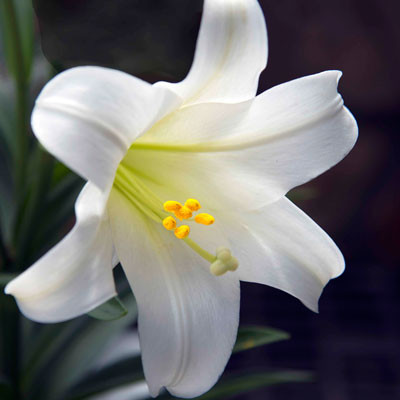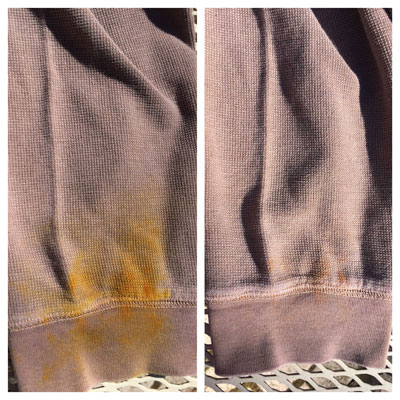Happy Easter Lilies
You may already have an Easter lily on the dining room table, or chances are you bought one to decorate the altar at church. Let’s help you enjoy your lily to the fullest.

Photo: Grace and beauty of Easter lily blossoms bely the challenges growers have in producing them.
Extending the bloom time of your lily…
You may have gotten your plant sleeved in a brown paper wrap to protect it. We’ll start there.
1. If it is sleeved, remove the sleeve from the bottom up, carefully tearing it away. Our instinct is to try to save the sleeve. Trust me – you have absolutely no reason to do so
2. Keep your plant moist, bright and cool – just as it was in the greenhouse. Do no leave it standing in water, however.
3. As the individual flowers just start to open, carefully pinch off the anthers (flower parts that contain pollen) with tweezers. The pollen will stain the petals, and it’s sticky.
4. When the plant has finished blooming, plant it into your perennial garden. It will do best in morning sun with afternoon shade. It will bloom again next year – probably a few weeks after Easter, but don’t be surprised if it plays out after a few years due primarily to the Texas summertime heat.

Photo: Sweatshirt once stained with lily pollen is almost clean following four hours in the sun.
Handy Tip:
A few months ago I brushed against pollen in some lilies at a local McKinney flower shop. Stacy Edwards, the owner, advised me to lay my sweatshirt out in the sun for a few hours. I didn’t try to daub off the pollen – that would have been my natural reaction, but she urged me not to do that. I just let the sunlight perform its magic. Pretty amazing what a difference that treatment made. What you see is solely the work of the sunshine. No cleaner, no water, no solvent.
Why growers don’t like lilies…
I posted this list here a year ago, but it really merits repeating. Easter lilies are like a trip to the casino for greenhouse growers. They have no way of knowing what to expect. Here’s why:
• Unlike all other holidays, the date of Easter can vary by almost a full month from late March past the middle of April.
• Spring conditions vary from year to year (i.e. this year!). So it’s really hard for a grower to learn where the plants should be in their development on any given date. Things are never the same.
• Lilies are grown from bulbs, and quality of those bulbs can vary – much more than cuttings or seeds of other greenhouse crops.
• Those bulbs are produced primarily in the Northwestern U.S., and conditions there are cool and moist. But their weather varies from one year to the next, too.
• Lilies are usually planted into their greenhouse pots as soon as poinsettias are cleared out. But remember that the end date for the lily crop varies by 25 days one year to the next.
• The grower uses temperature to control the plants’ rate of development: warmer to speed them up, cooler to slow them down.
• Lilies are sold by bud count. The more buds a plant has, the better the price the grower will get for it.
• But if you change the temperatures too much as the plants are growing, or if you let the plants get just a tiny bit too dry, buds will abort (“blast”) and the value of the plant is sure to sink.
• In their pots and with their potting soils, lilies are heavy to ship, and flower buds are easily snapped. And there go the profits.
So when you go into the flower shop to buy your lily in the next day or two, give a little shout-out of thanks to the grower who nurtured and loved it. Honestly, it’s amazing that any grower will accept that challenge.
